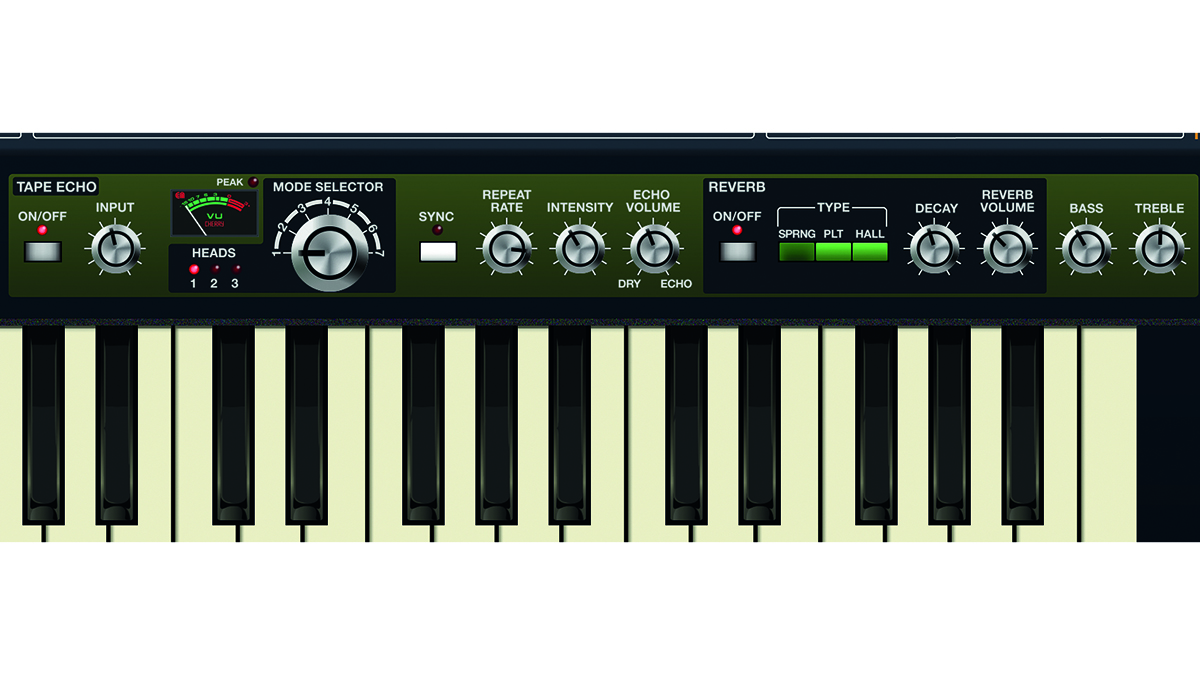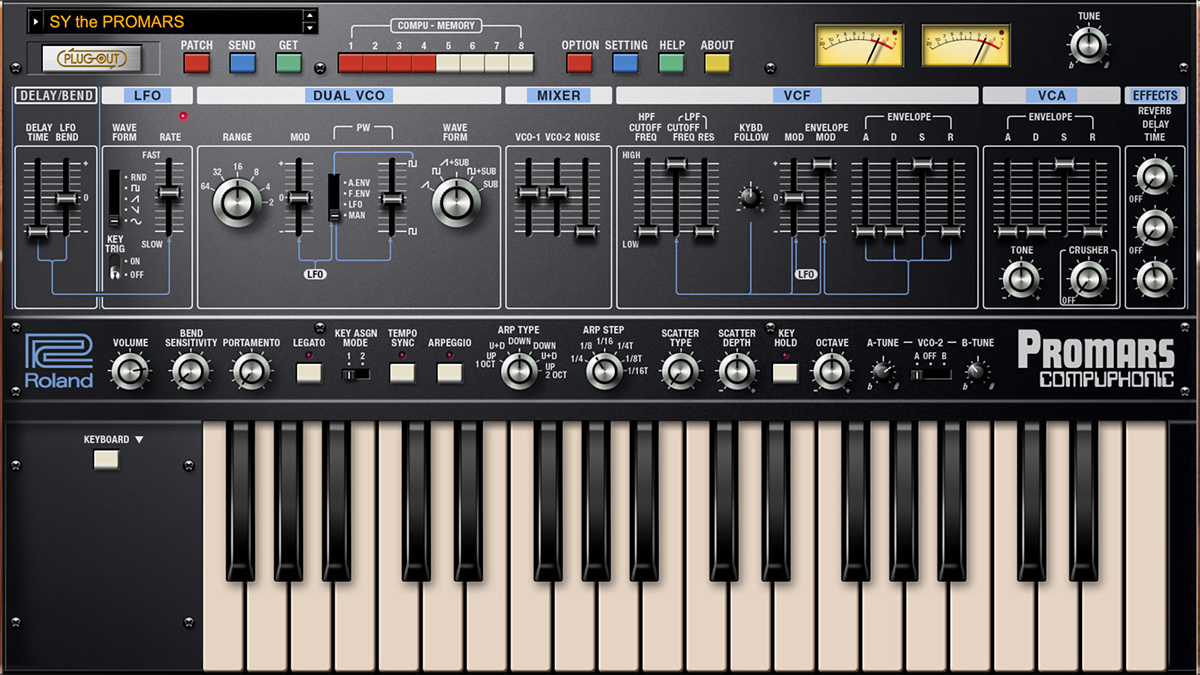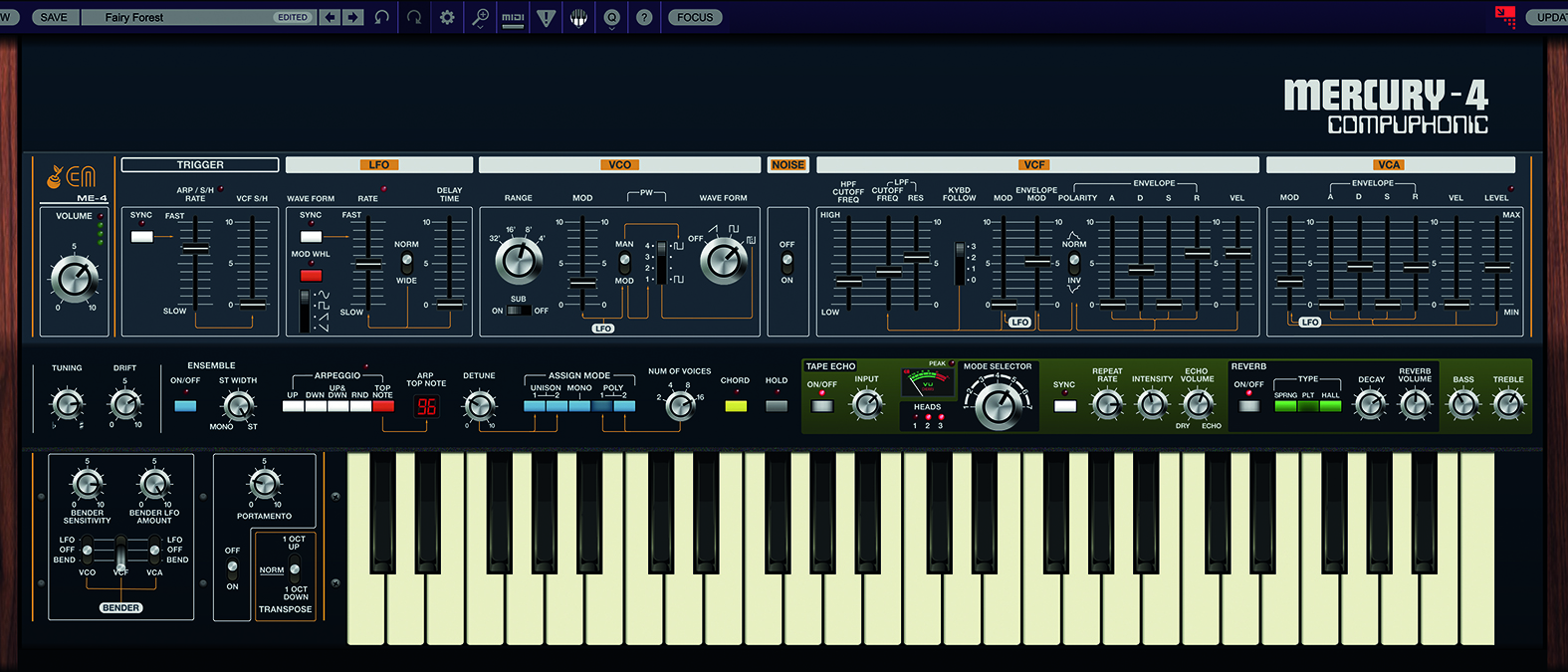MusicRadar Verdict
A lovingly crafted tribute that widens the aural capabilities of this once-limited synth, revealing a colourful sonic playground.
Pros
- +
Very thorough reproduction of an often overlooked golden age synth.
- +
High quality sounds given new life.
- +
Fluid and authentic arpeggiator.
- +
Improves on the original’s capabilities.
Cons
- -
Distinct sonic character may not be for everyone.
MusicRadar's got your back
Cherry Audio Mercury-4: What is it?
Roland’s Jupiter series is often held aloft as one of the most important synthesiser lines of all time. There’s good reason for that, of course, with 1981’s state-of-the-art Jupiter-8 igniting the potential of keyboard analogue synths as slick and cool sound-crafters to many for the first time. Its kinetic stew of sounds informed the development of synth pop, new wave and bombastic rock, continuing to be used all the way into the dance music decades. With a veritable who’s who of artists pulling futuristic sounds from within its tantalisingly colourful veneer on Top of the Pops, many Vince Clarke wannabes hankered for this tomorrow-proof instrument.
While a far more affordable version – the Jupiter-6 – was released shortly after, what many didn’t realise was that the Jupiter-line’s arrival was heralded by its clunkier precursor, the Jupiter-4.
Released in 1978, this little-loved, diminutive four-voice, polyphonic synth wasn’t all that visually appealing, with its surrounding wooden enclosure and tacky push buttons not exactly the most compelling of designs. Its lack of MIDI and CV/Gate, not to mention its single VCO-per-voice architecture, were all further reasons why this initial Jupiter mission piffled out at launch.
Still, there were those who found much to relish, including The Human League’s Phil Oakey, Thomas Dolby and The Cars’ Greg Hawkes. In fact, it is Hawkes’ own Jupiter-4 which Cherry Audio has carefully modelled here. The resulting product is Mercury-4, a complete softsynth recreation of the Jupiter-4. Now sporting a few added enhancements, we wonder if this digital resurrection has super-charged this maligned machine.
Fantastic four
Installation is extraordinary simple, and within minutes we’ve got our AU instance of Mercury-4 loaded into our Logic project. The large GUI presents a largely similar (though significantly augmented) version of the original layout of the Jupiter–4. With each of the synthesiser’s key control sections arranged in their respective areas of Trigger, LFO, VCO, Noise, VCF, VCA, and Performance Controls.
Comparing it side-by-side with an original Jupiter-4 exterior reveals a few striking innovations that Cherry Audio has brought to the table, however. Most obvious is the incorporation of a Space Echo-esque tape echo and reverb simulation into the plugin. Presented in a suitably green-tinted section to the upper right of the keyboard display, the Space Echo sim is a sweet addition, with a light application of genuinely spatially enhancing pretty much all of the synth’s sounds.

Cherry Audio Mercury-4: Performance and verdict
So what of these sounds then? After all, it’s certainly the unit’s distinct tonal characteristics that spurred its cult of aficionados. In the top left we have the preset selector, which handily divides over 400 sounds into their respective categories, including leads, basses, arpeggios and pads.
It’s plainly apparent that there’s a lot more to Mercury-4 than meets the eye
There’s a distinctly retro flavour to the vast majority of ready-to-go sounds, particularly when cycling and triggering the arps. Those designing quirky video game soundtracks will find a lot to mine from here. Our quick preset skim highlights include the spritely, 8-bit-sounding Brush Taps, the arpeggiated Square Space and stinging Edgy Arp, and the emotive Modern Classic bass sound. While many sounds have that 70s kitsch quality to them, it’s plainly apparent that there’s a lot more to Mercury-4 than meets the eye.
Cherry on top
Mercury-4’s sonics might have something of a day-glo veneer, but it’s clear that there’s a lot of sound-creating potential here. Lifting the hood of this software reveals a signal path built around a modelling of that original oscillator and sub oscillator, while all of the Jupiter-4’s dual filter nuances have been captured with peerless detail – these sounds feel like they’re coming out of a dusty old relic, especially when you add a touch of Drift for a little more authentic analogue unpredictability.
Not feeling content with just making an exacting remake, Cherry Audio has also indulged in a little revisionism. While the original Jupiter-4 was limited to just eight memory locations for homemade sound design (saved via its ‘Compuphonic’ internal storage) we’re now gifted with infinite scope for preset-saving. Full 16-voice polyphony over the original’s four and – perhaps the most attractive new aspect – MPE support.

• Roland ProMars
A smaller variant of the Jupiter-4; this official software version has similar character to the Mercury-4.
• Arturia SQ80 V
Provides an accurate modelling of the similarly lo-fi and under-loved Ensoniq SQ-80.
Controlling these sounds via MPE reveals new dimensions which would have been unimaginable back in ’78. Enabling MPE mode allows you to map an array of parameters to your MPE device, across the three standard dimensions of pitch, pressure and timbre. While there are too many to list here, our VCO Modulation Amount and Resonance mid-performance opens up sounds in astounding new ways.
Another major high-point here is the flawless arpeggiator, controlled via simple switches and yielding pulsing runs via a unique method of implementation. Basically, the octave range is dependent on where the notes are pressed on the keyboard as opposed to being assigned manually. While initially confusing, it’s quick to get the hang of when you figure out where these areas are located. The four arpeggio controls allow you to cycle between Up (lowest to highest notes), Down (the opposite), Up & Down and Random.

Does it bend?
Though it lacked the pitch bend wheel that its bigger brother, the Jupiter-8 would later sport, the original Jupiter-4 included a small joystick bender control on a horizontal axis that allowed some rather rigid control of VCO pitch, VCF cutoff, VCA volume or how much LFO modification is applied to the VCO, VCF or the VCA.
The Mercury-4 now allows your MIDI controller’s pitch bend wheel to serve the same function, albeit more fluidly and in a more performance-ready way. It’s nice to be able to jiggle around modifiers like this, developing evolving textures as modulation is introduced and removed musically.
Couple this with the velocity-sensitive MPE support and the Mercury-4 offers a radically different experience than the one offered by the hardware’s original capabilities.
Mercurial magic
Whoever you are, you’ll undoubtedly have a blast with Mercury-4; it’s an authentic-sounding and majorly editable synth that has been replicated with absolute love and respect for its source. Whether it becomes a beneficial addition to your own tracks is another story, with its intrepid tones maybe a little too garish for many sound designers. Either way, at a double-take-inducing £30, you’d be unwise not to take a tour of Mercury.
MusicRadar verdict: A lovingly crafted tribute that widens the aural capabilities of this once-limited synth, revealing a colourful sonic playground.
Cherry Audio Mercury-4: The web says
"It’s a joy to play and experiment with, accessible for less experienced players but with plenty of depth for those who do want to delve deeper."
MusicTech
Cherry Audio Mercury-4: Hands-on demos
Cherry Audio
Starsky Carr
Audio Tech TV
Gear4music Synths & Tech
Cherry Audio Mercury-4: Specifications
- macOS Requirements: macOS 10.9 or above (including macOS 12), 64-bit required. Native Apple M1 processor support. Quad-core computer with 8GB of RAM recommended.
- Windows Requirements: Windows 7 or above (including Windows 11), 64-bit required. Quad-core computer with 8GB of RAM recommended.
- Mercury-4 is available in AU, VST, VST3, AAX, and standalone formats.
- A free 30-day demo of Mercury-4 is available. This demo will play white noise periodically, but is otherwise unlimited.
- CONTACT: Cherry Audio
Computer Music magazine is the world’s best selling publication dedicated solely to making great music with your Mac or PC computer. Each issue it brings its lucky readers the best in cutting-edge tutorials, need-to-know, expert software reviews and even all the tools you actually need to make great music today, courtesy of our legendary CM Plugin Suite.
“A synthesizer that is both easy to use and fun to play whilst maintaining a decent degree of programming depth and flexibility”: PWM Mantis review
“I feel like that song had everything we needed to come back with”: Bring Me The Horizon’s Lee Malia on Shadow Moses, its riff and the secrets behind its tone, and why it was the right anthem at the right time
“I said, ‘Are we sure we can write a song about death?’”: The story of Mike + The Mechanics' classic No.1 The Living Years











